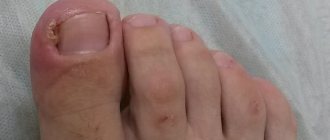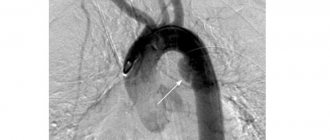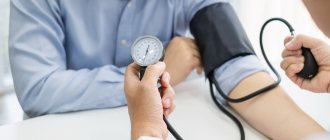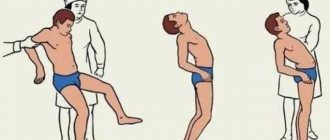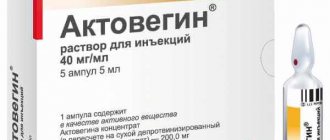Spider veins (webs or telangiectasia) are small visible dilated blood vessels (capillaries) that are located under the surface of the skin. They may be red (fed by cutaneous arteries called arterioles), purple, or blue (fed by reticular veins). The most common locations include the face, upper chest, and neck. Thin red lines that appear to extend across areas of the cheeks and nose indicate a spider web-like appearance (rosacea). The reason for the appearance of spider veins on the body is explained by disturbances in the metabolism of sex hormones in the hepatic system. Treatment of spider veins is a very difficult job for a phlebologist.
Most often, patients present with telangiectasis on the legs. In foreign literature, such spider veins are called spider veins. Spider veins on the legs can become quite noticeable, which for some patients creates a cosmetic problem, but they do not hurt. Because of their small size and superficial location, spider veins rarely lead to venous insufficiency, but many seek to eliminate them to improve aesthetic appearance. It is these signs of varicose veins that attract more attention and therefore are most often the reason for contacting a specialist after unsuccessful “treatment” with apple cider vinegar, folk methods and medications.
Causes of spider veins
Why elements of spider veins appear on the body and legs remains a mystery. Sometimes they appear at the initial stage of serious liver diseases. The pathogenesis of the manifestations of spider veins and their causes are precisely unknown. Possible risk factors leading to their formation are:
- Hormonal problems
- Taking oral contraceptives.
- Varicose veins of the saphenous veins (although spider veins often occur regardless of the presence of varicose veins).
- Heredity.
- Abuse of hot and spicy foods.
- Stress.
- Some medications, especially hormonal drugs, can stimulate the development of spider veins due to increased intradermal blood flow and venous stagnation.
Lifestyle
- To give up smoking. This will reduce the risk of developing complications of atherosclerosis of the arteries of the lower extremities. Smoking leads to arterial damage and is considered a major risk factor for the development and progression of extremity artery disease.
- Exercises. Success in treating peripheral artery disease is measured by pain-free walking distance. Proper exercise helps improve muscle condition so that you can use oxygen more efficiently. The doctor will help you choose the optimal training plan. You will be offered special exercises from the rehabilitation program.
- Proper nutrition. A special diet for the cardiovascular system reduces saturated fat, helps control blood pressure and cholesterol levels, which contribute to the development of atherosclerosis and ischemia of the lower extremities. Diets rich in vitamins A, B-6, C and E, folic acid, fibrates and omega-3 fatty acids are associated with fewer complications of arterial disease.
If lifestyle changes are not enough, you will need additional treatment. It is prescribed for severe forms of diseases, for example, for obliterating atherosclerosis of the vessels of the lower extremities. The doctor will prescribe medications to prevent blood clots, lower blood pressure and cholesterol levels, and for pain relief.
Basic questions about spider veins
- Is it painful to remove spider veins on the legs?
This question worries all women who decide to get rid of spider veins on the skin. The answer is very simple. For microsclerotherapy, the finest needles are used, so the injections are so painless that they surprise everyone who has undergone microsclerotherapy. In addition, our clinics use a cryosclerotherapy protocol. We always cool the skin with a special cooler, which makes injections absolutely painless. Treating intradermal vessels in the legs with laser or RFO is more difficult than with cryosclerotherapy and more expensive for the patient. Spider vein sclerotherapy is a painless and well-tolerated treatment procedure.
- What time of year is best for treatment?
It must be taken into account that the process of disappearance of the venous network after a course of sclerotherapy takes approximately two months. Therefore, if you are planning a vacation, then expect that you will be able to enjoy clear, star-free skin approximately 2-3 months after completing the course of treatment. Plan your visit to the phlebologist in advance so as not to be disappointed during your beach holiday. Treatment should not be done during pregnancy and breastfeeding, since the effect of the sclerosing drug on the child is unknown.
Surgery
Surgical treatment of leg vascular disease is often performed at the stage of complications.
- Shunting. An open operation, the essence of which is to cut off the affected area of the vessel and replace it with a prosthesis. Used for high levels of vascular blockage.
- Minimally invasive endovascular treatment. When the vessels are not completely blocked, most often without incisions and general anesthesia: endovascular surgery comes to the rescue. For diseases of the arteries of the extremities associated with blood flow disorders, balloon angioplasty and stenting are used. The lumen of the narrowed artery is expanded by inflating a special balloon from the inside and installing a metal stent into it, which plays the role of a frame holding the walls of the vessel. Read more about how stenting of leg vessels is performed here.
- Amputation. Indicated when tissue necrosis is irreversible.
What complications are possible after treatment for spider veins?
- Superficial necrosis
Removal of telangiectasia can be compared to microsurgery. Phlebologists use special magnifying glasses and illuminators for precise injections into the lumen of spider veins on the skin. Such equipment and the experience of a phlebologist make it possible to make an injection precisely into a microscopic vessel, without introducing sclerosant into the thickness of the skin. If the drug is injected intradermally, punctate necrosis sometimes occurs - small ulcers that do not need to be treated and they heal with small whitish scars.
- Deep necrosis
Another dangerous complication of microsclerotherapy can be injection into an arterial vessel. Entry of sclerosant into such a vessel can cause spasm of the cutaneous arteries and major skin necrosis, which may require long-term treatment and may heal with the formation of a rough scar. This is not the phlebologist’s big fault, but the doctor’s experience in choosing a vessel for injection is very important. Upon detailed examination under magnification, it is possible to distinguish a venous vessel from an arterial one and make the right choice. If the puncture site hurts, or if spots or blisters appear in the injection area, you must immediately inform the phlebologist about this condition.
- Microburns during laser treatment and RFO.
These thermal treatments involve heating and welding the vessels. Due to this, a cosmetic effect is achieved. However, in the hands of an inexperienced specialist, laser coagulation can lead to skin burns due to too long exposure to radiation. Most often, the area of this burn is very small and can clinically appear only as a crust, but sometimes there are deeper skin lesions that form rough scars.
- Meshing and hyperpigmentation after microsclerotherapy.
In approximately 10% of patients treated for intradermal vessels, a very thin venous network, called meting, develops in place of the disappeared asterisk. The occurrence of this problem is impossible to predict and very difficult to combat. Metting more often appears after conventional microsclerotherapy without the use of cold; somewhat less frequently, this problem occurs after laser coagulation and RFO. After the appearance of metting, it is better to stop any attempts to combat the asterisks, since practice shows the impossibility of solving this problem with the help of additional sclerotherapy or laser. Over time, this resulting smoky network may decrease on its own or disappear completely.
Hyperpigmentation is not scary, it will definitely go away, but it can take quite a long time. The appearance of the legs after treatment may not satisfy the patient for six months to two years. To prevent this complication, it is necessary to tell the doctor your contraceptive regimen and receive recommendations for contraception during the course of therapy.
In our clinic, a full course of sclerotherapy on the hips begins a month after the first trial session, at which the rate of disappearance of the venous network and the likelihood of complications are assessed. Depending on the results obtained, a decision is made on the timing of the further course of treatment.
- Early relapse of telangiectasis
No patient is immune from the reappearance of new telangiectasis after microsclerotherapy of the lower extremities. The reasons for the appearance of stars on the skin have not been fully established, but the most recognized theory is the postulate of an imbalance of female sex hormones in the body. The levels of these hormones may be normal, but their ratios are different. This is why it is impossible to predict the duration of the aesthetic effect after microsclerotherapy and laser treatment. Relapses are possible, but if these wreaths disappeared well after the first course of treatment, then they will disappear just as well after subsequent ones. In the hands of an experienced phlebologist, complete success in the aesthetic treatment of telangiectasia is usually achieved.
Medicines
- Cholesterol-lowering drugs, statins, are taken to reduce the risk of myocardial infarction or stroke. For people with peripheral artery disease, the goal for low-density lipoprotein (“bad” cholesterol) is less than 100 mg/dL or 2.6 mmol/L. Target values should be lower if you have additional risk factors for heart attack or stroke, especially if you have diabetes or smoke. When treating diabetic angiopathy of the vessels of the lower extremities, attention is paid to combating the underlying disease - diabetes.
- Medicines to lower blood pressure. Their intake is very important in the treatment of vascular diseases. If you have high blood pressure, your doctor will prescribe medications to lower it. The goal of therapy is to reduce systolic pressure (upper number) to 140 mm Hg. and lower, and a decrease in diastolic pressure (lower number) - up to 90 mm Hg. and below. If the patient has diabetes, then the target blood pressure is 130/80 mm Hg.
- Medicines to control blood sugar levels. If you have diabetes, controlling your blood sugar (glucose) levels is important. Diabetic angiopathy and other vascular diseases of the legs are associated with elevated sugar levels. Talk to your doctor about your glucose goals and what you can do to reach them.
- Medicines to prevent the development of blood clots. Because peripheral artery disease reduces blood flow to the lower extremities, it is important to reduce the risk of thrombosis. Blood clots form in vessels during thromboangiitis obliterans and other diseases of the extremities in advanced forms. A blood clot can completely block the affected artery and cause tissue damage. For prevention, you will be prescribed a daily dose of aspirin and/or another drug that helps prevent blood clots.
What foods should you eat to strengthen the walls of blood vessels?
The main role in the healthy functioning of blood vessels and the entire body is played by properly selected nutrition. In order to strengthen blood vessels, it is necessary to eat:
- Vegetables and herbs are irreplaceable products that should be present in every meal. All plant foods contain large amounts of vitamin C and potassium - these are 2 important components that affect the health of the veins.
- Legumes. They contain components that prevent the deposition of cholesterol on the walls of blood vessels. In addition, they improve the elasticity of blood vessels.
- Decoctions of herbs and berries. They have a positive effect on the entire venous system thanks to antioxidants. Replace coffee with rosehip infusion and you will feel an improvement in the functioning of your entire body.
- Milk and dairy products. Due to their composition, cheeses and milk are easily absorbed by the body and do not overload it.
- Fish and seafood. Their daily consumption is an excellent prevention of vascular disease.
- Bitter chocolate. It has a positive effect on blood vessels throughout the body and reduces the risk of cholesterol plaques. Only chocolate should not contain sugar.
Remember that to strengthen the walls of blood vessels, it is not enough to change just your diet. You need to choose a gymnastic set of exercises for yourself and perform them regularly, give up bad habits and reduce the activity of cosmetic procedures. For patients suffering from congenital vascular problems, more drastic measures are required using medications and wearing compression garments.
Diseases affecting blood vessels
Existing chronic diseases can be a damaging factor causing capillary rupture.
Diseases that have a harmful effect on the white of the eye include:
- During an exacerbation of chronic infections, hemorrhage can be caused by increased body temperature.
- Endocrine pathologies (the aforementioned diabetes mellitus).
- Hypertension. The protein turns red during changes and significant increases in blood pressure caused by hypertension.
- Tumors formed in the white of the eye.
- Lack of vitamins C, A, rutin and microelements in the body.
- Inflammations localized in the eye (keratitis and conjunctivitis).
Ophthalmological diseases - keratitis and conjunctivitis of the eye. Keratitis is a disease characterized by inflammation of the cornea, manifested mainly by pain, clouding and redness, and then the appearance of ulcers.
Keratitis can affect both eyes or one of them.
The main symptoms are manifested in less pronounced transparency and shine of the cornea, tearfulness, photophobia (a phobia consisting of fear and sensitivity to the perception of light), blepharospasm (a fairly persistent closure of the eyelids).
Helminths are parasitic worms that choose to live in a human or animal body. The statistics are terrifying: illegal residents are so common that one in five people in our country is familiar with them, often without even knowing it. Read more in the article: “helminths in adults.”
Conjunctivitis
- a disease expressed in the inflammatory process of the mucous membrane of the eye.
Symptoms such as:
- itching;
- burning sensation;
- redness;
- sensation of a foreign body in the eye;
- discharge of mucus or pus from the eyes.
Advertising:
This disease, in comparison with other ailments affecting the eyeballs, is the most common. Characteristic symptoms make it possible to identify it in time and begin appropriate therapy.
[media=
https://youtu.be/veIeVXPZOH8
]
Pharmaceutical solution method
Advertising:
For regular eye strain and frequent work at the computer, you can apply various drops
, relieving irritation and redness.
Now there are many drugs that can be found on the shelves, from completely different manufacturers and different price categories. Below are four drops. By looking at how much each one costs and a description of the indications, you can choose the most suitable ones.
| Name | Mode of application | Price |
| Visine | Visin drops should be instilled into the conjunctival sac of the affected eye, two to four times a day. The duration of use of the drops should not exceed four days. | 327 rub. |
| Taufon | When cataracts are detected, “taufon” is prescribed 1-2 drops, two to four times a day, for three months. The course should be repeated at monthly intervals. For injuries, the same dosage is prescribed. | 101.20r |
| Emoxipin | Emoxipin drops are instilled 1-2 drops into the conjunctival sac two to three times a day. The duration of treatment ranges from three to thirty days - the duration of the course depends on the severity of the disease. | 157.00rub |
| Hyphenation | Hyphenate drops should be instilled 1-2 drops, four to eight times a day into the conjunctival sac; in extreme situations, the dose can be increased to 1-2 drops every hour. The course of treatment lasts no longer than 21 days. | 37.30 rub. |
The above remedies are among the safest. Therefore, even if a blood vessel in a child’s eye bursts, you can buy these drops without fear. Also, these drops can be used for preventive purposes, to achieve the most comfortable feeling of the mucous membrane, get rid of redness and burning sensation.
